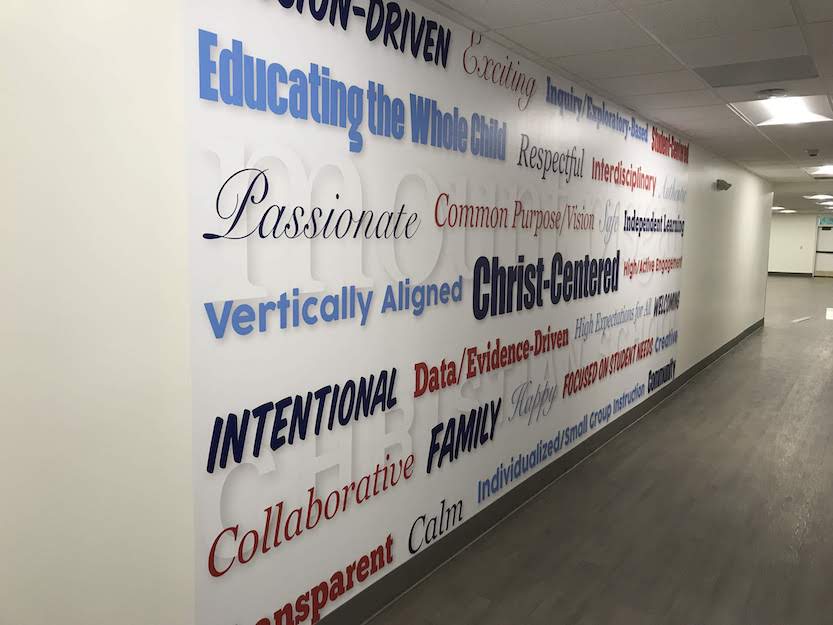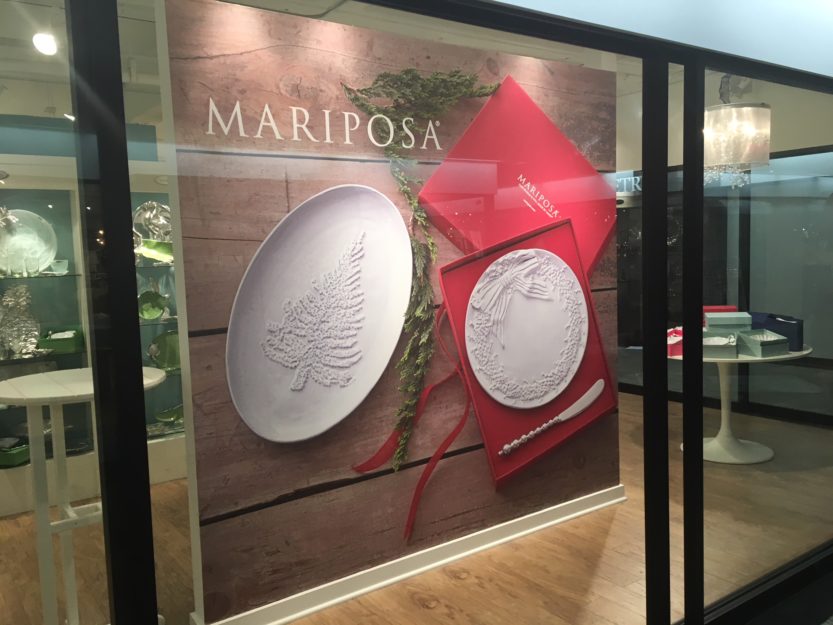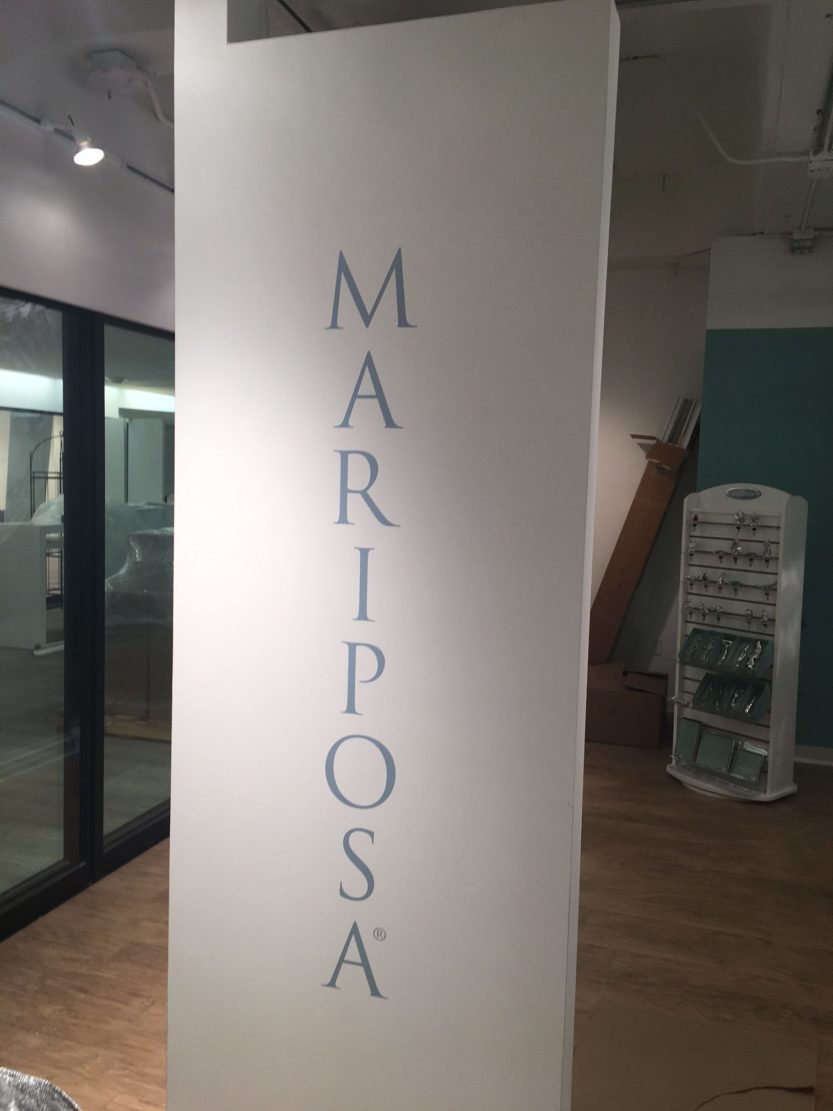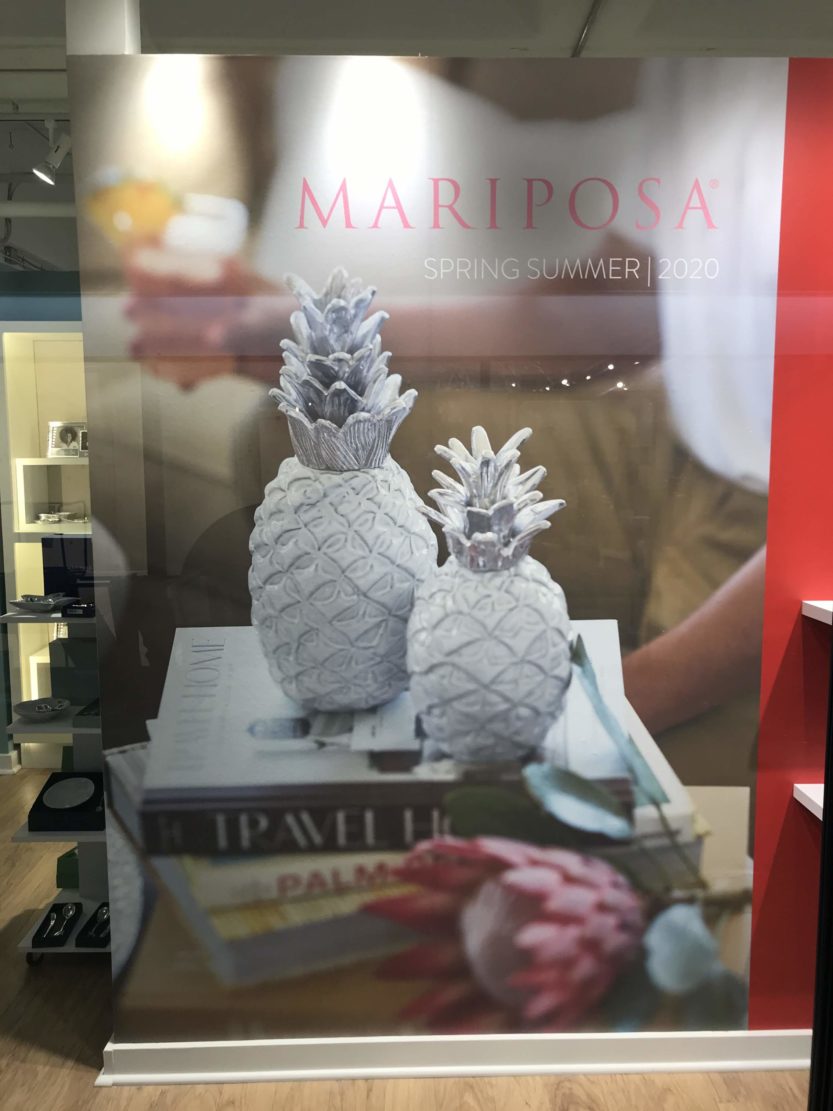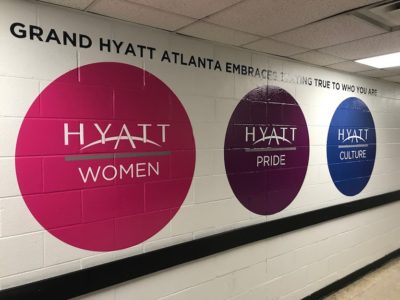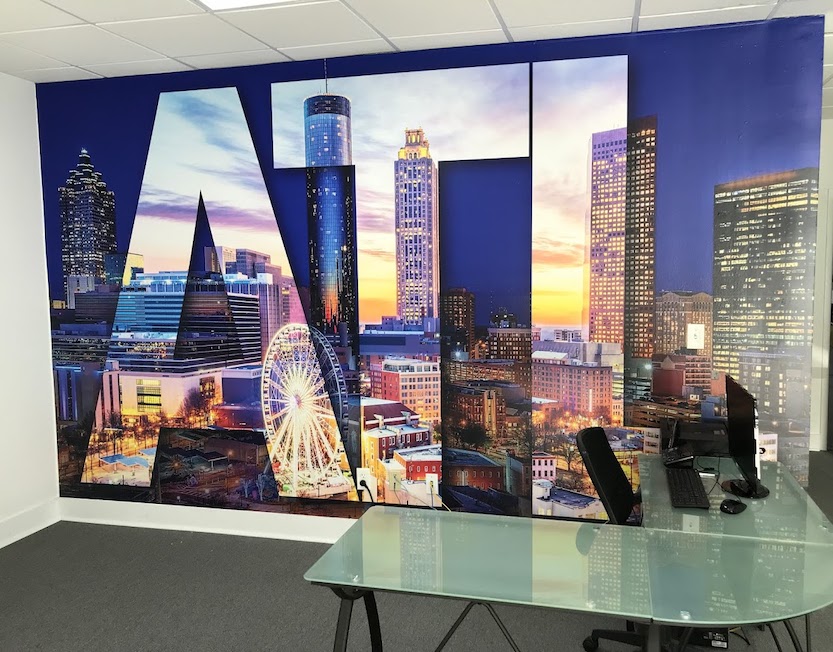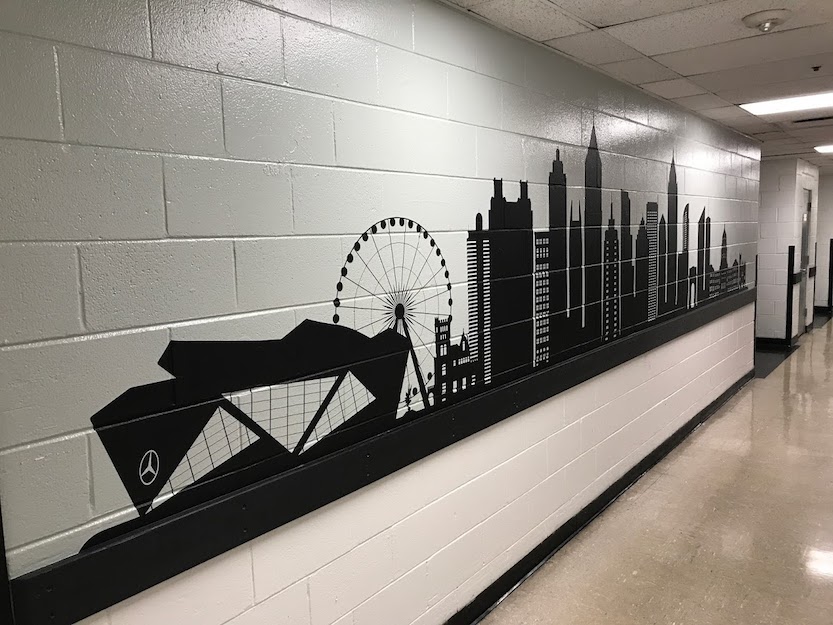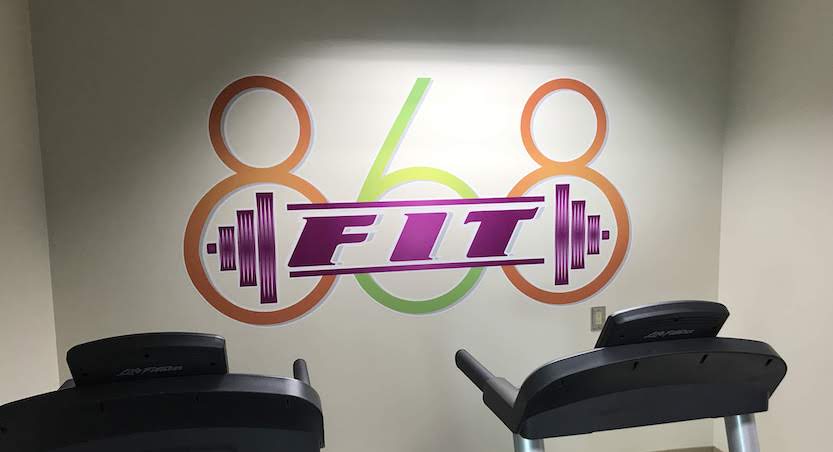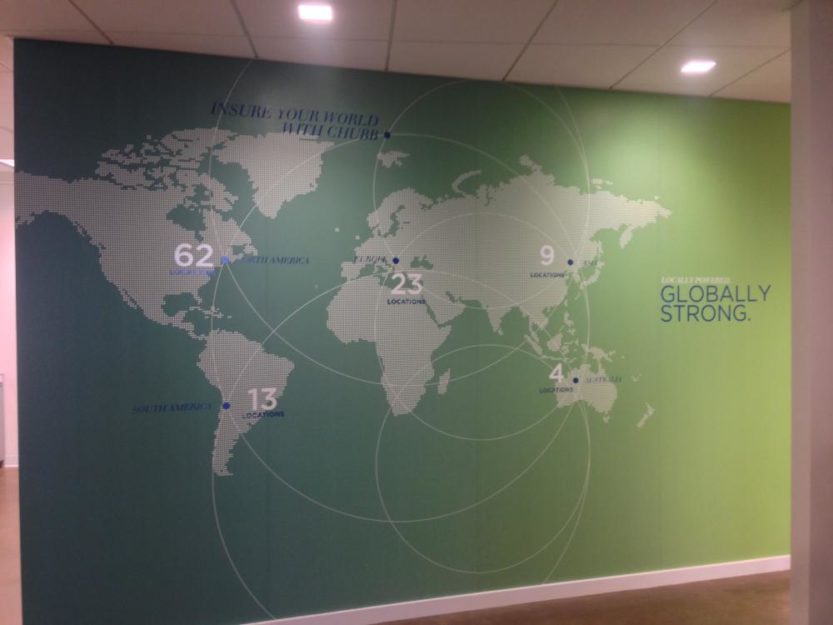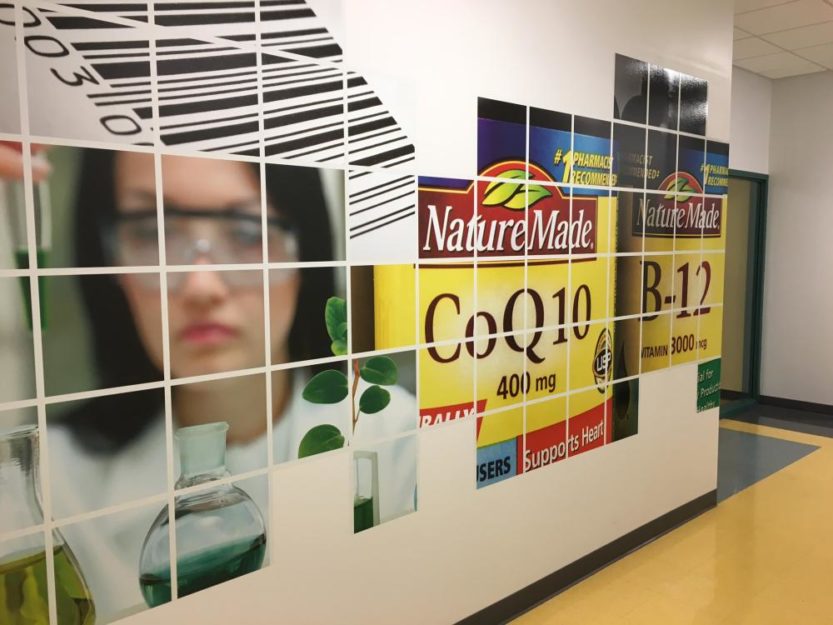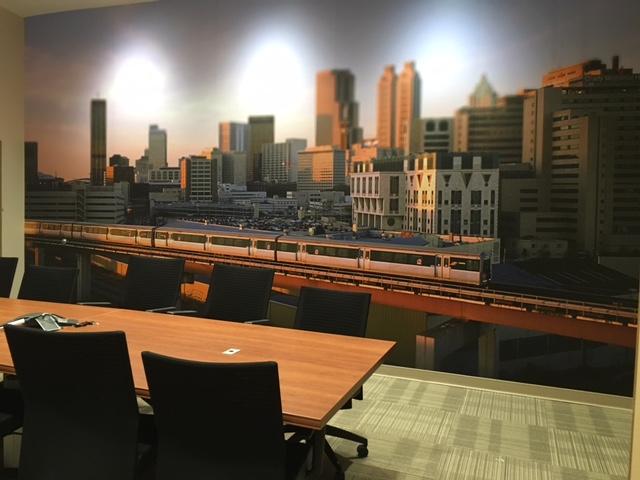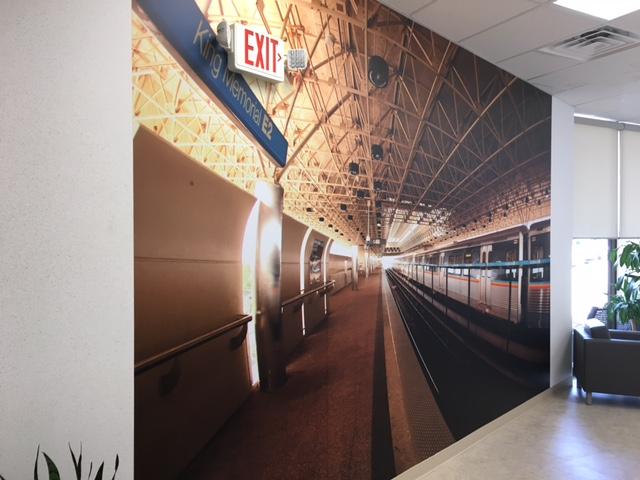Wall Graphics
We design, print and install commercial wall murals and indoor graphics.
Covering up a blank or empty wall is a routine tradition for people of all ages in all backgrounds. As kids, we had wallpaper designs and framed portraits. In college, we would hang tapestries and posters of landscapes to show off our personalities. The act of using wall coverings to represent who you are and what you stand for also carries over into the professional world.
With commercial wall coverings, businesses can thoroughly and vividly represent their brand and what their company’s missions and values are. They easily attract the attention of customers and provide the perfect discussion point for a dialogue to begin.
At SpeedPro Greater Atlanta, our goal is to create the custom wall coverings you need to tell your story — boldly and in style.
What Are the Best Options for Environmental Graphics?
As a nationwide leader of printing environmental graphics, we work hard at customizing designs that best represent you in the most open and honest way. We’ll create the perfect coverings for various rooms and your intended purposes — for instance, are you only trying to add color to a room, or are you looking for a branded message that can persuade interested clients?
Commercial wall coverings are eye-catching features that introduce customers to your business before you even speak one word.
Some of the visual solutions available to choose from for your wall coverings include:
- Wallpaper
- Backlit graphics
- Fabric wall coverings
- Removable vinyl
- Stretched canvas
- Wall murals
How temporary or permanent your branding and display needs are can determine the type of covering best suited for your purposes. For instance, are you looking for a design to promote something special about your business? Maybe you’re seeking an additional piece to match your upcoming rebrand. Or perhaps you’re looking for a solid design that will greet every customer each time they come inside. What’s the difference between wall murals and wallpaper?
For your more temporary, short-term needs, backlit graphics and removable vinyl work best. Removable vinyl is adhered directly to your wall’s surface but includes an adhesive that can be easily removed and relocated. Backlit graphics use special lighting features to draw the eye toward a particular design or message on a pop-up frame — perfect for showing off your new inventory or special offers.
If you’re looking for a “staple” to reside in your lobby or conference room, consider adding a stretched canvas piece or a large-format printed wall mural. These solutions are durable graphics that will use fade-resistant inks to boldly portray your branded message. Order one large piece or multiple smaller designs for a collage effect.
WALLPAPER VS. WALL MURALS: MATERIAL USED
One considerable difference between wallpaper and wall murals is the type of material used to make them. Both wallpaper and wall murals can be made using a variety of materials. The types of material a wall mural might be made out of include:
- Vinyl: Two materials are often used to produce vinyl wall murals. Cast vinyl is a thin material that can provide bright, vibrant colors. Calendared vinyl is slightly thicker and better suited for larger walls. Cast vinyl’s thinness allows it to turn corners or wrap-around columns a bit better than calendared vinyl.
- Photo paper: Photo paper is a type of paper that has a light-sensitive coating on top of it. The coating allows the paper to produce photographic prints. Photo paper is ideal for interior wall murals with a photographic print or pattern.
- Canvas: Canvas is a type of fabric, usually made from cotton or a cotton/polyester blend. Unlike vinyl or photo paper, which tend to be smooth, canvas gives a wall mural a bit of texture.
- Perforated window film: As you might guess, perforated window film is used to produce wall murals that are meant to be hung on glass surfaces. It can be used on windows or on walls made from glass. The perforations let the light shine through. Also, it’s possible to still see out of the glass from one side when the window film is used.
- Polyester or Mylar: Polyester or Mylar — a type of polyester — are often used to create outdoor wall murals.
There is some overlap between the type of materials used to create wallpaper and the materials used for wall murals. Some of the types of material you might find wallpaper made from include:
- Lining paper: Lining paper wallpaper is the “no-frills” wallpaper. It’s usually unprinted and plain. Its purpose is more to cover up imperfections in a wall rather than to add visual interest to the wall. It’s traditionally painted or covered over with another type of wallpaper.
- Cellulose: Traditional wallpapers tend to be made of cellulose, a breathable material that isn’t water-resistant. The inks used on cellulose wallpaper tend to fade when exposed to sunlight.
- Grasscloth: Grasscloth is made of a type of natural fiber, such as bamboo or hemp, which is pasted onto rice paper. Grasscloth wallpaper typically comes in 36-inch rolls. It’s not water-resistant and has a reputation for being more challenging to care for compared to other materials.
- Vinyl-coated paper or fabric: Vinyl-coated wallpaper is more water-resistant than plain paper or cellulose options. It’s typically used in areas that have high humidity, such as bathrooms or kitchens.
- Vinyl: Like a wall mural, wallpaper can also be made of vinyl. Vinyl wallpaper is very durable, water-resistant and easy to clean.
- Velvet-flocked paper: Some types of wallpaper have a velvety coating, which gives the surface a soft, fuzzy feel.
- Foil: If you’ve ever seen shiny wallpaper, you’ve witnessed foil wallpaper in action. Foil wallpaper typically needs to be used along with lining paper, as it is thinner than other materials.
- Non-woven: Non-woven wallpaper is made from a mix of natural and synthetic materials. It’s meant to be a more eco-friendly alternative to vinyl wallpaper.
The Perfect Wall Coverings for Businesses in the Region
Think you’re ready to add a commercial wallcovering to your office setup? If so, contact SpeedPro today for your free design quote, and visit our studio to see our design visuals up close.

